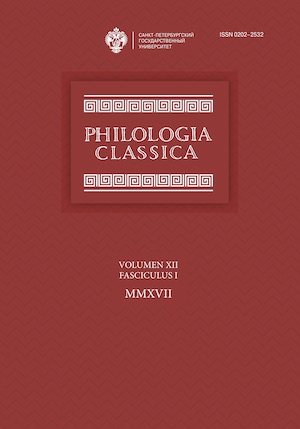Soph. Ant. 471 and Aeschylus’ Oedipus
DOI:
https://doi.org/10.21638/11701/spbu20.2017.101Аннотация
Статья посвящена интерпретации стихов 471–472 трагедии Софокла «Антигона». Трудность вызывает понимание эпитета ὠμός, отнесенного к героине. Неясно также, в каком смысле упоминается ее отец. Отвергая ставшее популярным в последние десятилетия толкование ὠμός как «дикий, нецивилизованный», автор статьи предлагает видеть в указанном пассаже отсылку к несохранившейся трагедии Эсхила «Эдип», а именно к тому её эпизоду, в котором герой проклинал своих сыновей — чем и мотивирована ὠμότης. Согласно свидетельствам, обнаруживаемым в «Семерых» Эсхила (778–87), а равно и в схолиях к Софоклову «Эдипу в Колоне», Этеокл и Полиник лишили отца содержания, когда тот оказался в их власти. По мысли автора, τροφή в указанных стихах Эсхила следует понимать как «забота», «содержание», но не «происхождение». Библиогр. 47 назв.
Ключевые слова:
Антигона, Софокл, Эдип, Эсхил, «Семеро против Фив»
Скачивания
Библиографические ссылки
Загрузки
Опубликован
Как цитировать
Выпуск
Раздел
Лицензия
Статьи журнала «Philologia Classica» находятся в открытом доступе и распространяются в соответствии с условиями Лицензионного Договора с Санкт-Петербургским государственным университетом, который бесплатно предоставляет авторам неограниченное распространение и самостоятельное архивирование.






